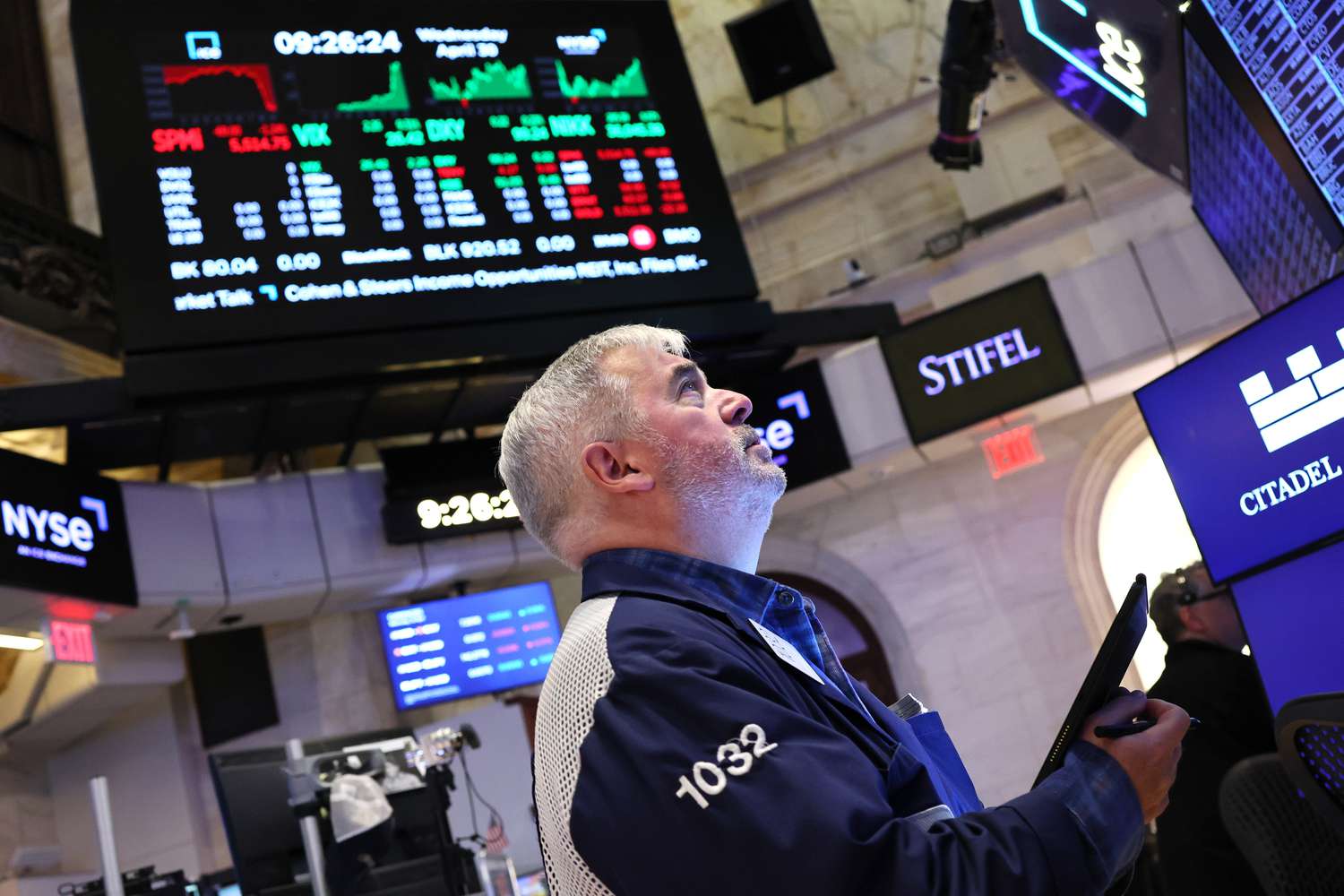Tom Yeung here with your Sunday Digest.
Last month, I wrote about five stocks to “buy the dip.” Our quantitative systems signaled April’s selloff had gone too far and that low prices would be enough to trigger a market rally.
Since then, these five firms have performed splendidly, largely outperforming the S&P 500’s 8% rise.
- Salesforce Inc. (CRM) +16%
- Akamai Technologies Inc. (AKAM) +13%
- Advanced Micro Devices Inc. (AMD) +16%
- Moderna Inc. (MRNA) +6%
- Celanese Corp. (CE) +13%
InvestorPlace Senior Analyst Luke Lango believes this is just the start.
He predicts a major event on May 7 will trigger a flood of cash – as much as $7 trillion – to rush back into U.S. stocks. It’s a catalyst that could change the entire market dynamic and create a new summer “panic” of the sort not seen since 1997.
This is why he held a special 2025 Summer Panic Summit on Thursday. At this event, Luke explained why he believes this catalyst on May 7 will be a game-changer. Plus, he revealed a new set of stocks that he believes are primed to lead the next wave of growth. (You can watch a replay of the event here.)
Now, I can’t tell you what this catalyst is. You’ll have to see it for yourself in Luke’s special presentation. But if this panic buying he describes does take off, several of my top long-term picks are certain to benefit.
Let’s revisit two of them today – and a new one as well…
The Leveraged Play
The first is Sabre Corp. (SABR), one of the three firms that run the world’s Global Distribution System (GDS) for hotels and flights. Virtually all travel agents and online booking systems use GDS to book flights since it’s the only platform with real-time data on available seats, rooms, and prices. That means industry profits are generally stable and very high. (Even Alphabet Inc. [GOOGL] failed to create a rival system and now uses Sabre to power Google Flights.)
That’s why private equity decided to take Sabre off the public markets in 2007. They saw a cash cow that could be loaded with debt to make large profits even bigger. And it worked, at least in the short run.
Sabre returned to public markets in 2014 with 50% higher net income, and the stock surged another 70% the following year as profits continued to climb.
Then, two things happened.
- Covid-19. The once-in-a-century pandemic brought air travel to a near standstill, slashing Sabre’s revenues and making debts impossible to service.
- Rising rates. The following year, the U.S. Federal Reserve began hiking interest rates to stave off inflation, making it harder for Sabre to pay off existing debts and roll them into new deals.
That crushed Sabre’s share price, which has fallen 90% since early 2020. Its debts are now worth almost six times more than its equity… a situation usually associated with near-bankrupt companies.
But if Luke’s calculations are right, things could soon turn around for this equity “stub.”
In fact, since the company is so financially leveraged, a 10% increase in enterprise value will translate into a 58% increase in share price.
That makes Sabre an incredible “option-like” play. In the worst case, the stock goes to zero… but in the best case, SABR shares could rise 2X… 5X… or even 10X.
The Real Estate Kings
The May 7 catalyst will also be felt among real estate companies that rely on more traditional debt financing.
My two favorites are on opposite ends of the risk spectrum. I would recommend both as complements.
- Realty Income Corp. (O). This real estate investment trust (REIT) is arguably the most conservative of its kind. Leases are made on a “triple net” basis, meaning tenants are responsible for almost all costs, and the company attracts blue-chip tenants by offering minimal rent increases. Its dividend is paid monthly and sits at a stunningly high 5.6%.
- Digital Realty Trust Inc. (DLR). Meanwhile, DLR is one of the most aggressive REITs thanks to its single-minded pursuit of growth in AI data centers. Gross income more than doubled to $2.9 billion in 2024, and analysts expect another 50% surge to $4.5 billion by 2027. Cloud computing firms like Microsoft Corp. (MSFT) are still starved for computing power, and Digital Realty has grown as quickly as possible to service that need. Dividends are lower at 3% to reflect this potential.
These two firms are well run. Realty Income has played the long game by focusing on grocery stores (10% of its portfolio), convenience stores (9%), non-retail stores (i.e., industrial and services) (21%), and other businesses resistant to e-commerce competition.
On its part, Digital Realty realized early on that cloud computing customers would need dense colocation data centers (where powered, connected warehouse space is rented out to firms that bring their own servers) and quickly moved to offer that service.
That means both firms should see a surge in buying interest on a May 7 catalyst. Despite their differences, these REITs are economically sensitive firms. And if Luke is right, a summer panic could send these types of companies soaring.
The Healthcare Acquirer
Finally, I’m adding a new pick to my top list:
Biogen Inc. (BIIB).
This high-quality biotech firm was created in 2003 in a mega-merger of Biogen and automation company Idec. Shares rose as much as 1,200% through the biotech boom of the mid-2010s as blockbusters like cancer drug Rituxan and MS therapy Avonex came onto the market. Biogen also proved reasonably adept at acquiring and partnering with other biotech firms, though a 2019 acquisition of Nightstar did end with two clinical failures.
Challenges began to mount after 2023 on rising research costs and high interest rates. Suddenly, new therapies became far more expensive to finance. A lackluster launch of Alzheimer’s drug Leqembi also spooked investors. So did recent staffing cuts at the U.S. Food and Drug Administration (FDA), which will increase the time and barriers for new drug approvals.
Biogen’s stock has dropped 60% over the past two years and trades at 8X forward earnings, compared to a long-term average of 13.3X.
The May 7 catalyst could change part of that equation.
This summer, we could see investors return to this beat-up stock whose forward price-earnings ratio now looks more like an automaker’s than a top-tier biotech’s. Biogen’s pipeline and several new launches look reasonably strong. Recently approved drugs like Skyclarys, used in neurology, and Zurzuvae, for postpartum depression, should reduce the impact of expiring drugs and Leqembi’s slower-than-expected success.
It’s also worth noting that large biotechs like Biogen have significant marketing and production scale that make them attractive partners, allowing them to snap up promising smaller firms at a discount.
Of course, many of Biogen’s challenges will remain. Biotech is an industry that generates enormous paydays and equally significant flops. I’m also not expecting a quick return to “normal” at the FDA.
Still, if you had told me two years ago that Biogen would be on sale at 8X forward earnings, I wouldn’t have believed you. And now, it’s something worth taking advantage of.
The Summer Panic of 1997
In May 1997, the Asian Financial Crisis was getting started. Currency speculators were dumping the Thai baht, forcing that country’s central bank to defend their currency exchange rate with a dwindling supply of foreign reserves. By July, these reserves had run out, triggering a devaluation and market mayhem. It only took several months for the crisis to spread to South Korea, Hong Kong, and beyond. Asian stock markets collapsed.
Yet, none of this affected the dot-com boom. Over the same period, the tech-heavy Nasdaq Composite surged 20% to a new record as American investors began recognizing the promises of the internet. Retail investors were more panicked about missing out than with some faraway financial crisis.
Luke Lango believes we’re approaching a new version of this two-sided “panic.”
Today, bearish institutional investors are dumping tariff-impacted companies as global macro fears kick in. Shares of Norwegian Cruise Line Holdings Ltd. (NCLH) have dropped 38%, while those of shoe retailer Deckers Outdoor Corp. (DECK) have sunk 45%.
Meanwhile, retail investors are aggressively buying the dip every chance they get. On April 3, individual investors bought $4.7 billion of equities following President Donald Trump’s “Liberation Day” selloff. And on Wednesday, a negative U.S. GDP report was quickly buried as these same mom-and-pop investors snapped up shares.
That’s because there’s a lot of money sitting on the sidelines. And there are a lot of bullish investors waiting to buy up stock.
This could come to a head on May 7, when Luke predicts an event will trigger a new cascade of retail buying.
Understandably, everyone is focused on short-term moves in the midst of a fast-paced market. But there’s something bigger happening behind the scenes…
For the full breakdown of this catalyst – and Luke’s blueprint for the summer – click here to check out his 2025 Summer Panic Summit.
Until next week,
Tom Yeung
Market Analyst, InvestorPlace.com
Thomas Yeung is a market analyst and portfolio manager of the Omnia Portfolio, the highest-tier subscription at InvestorPlace. He is the former editor of Tom Yeung’s Profit & Protection, a free e-letter about investing to profit in good times and protecting gains during the bad.

















